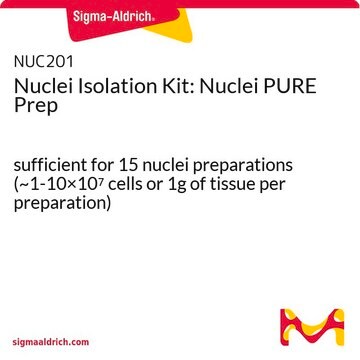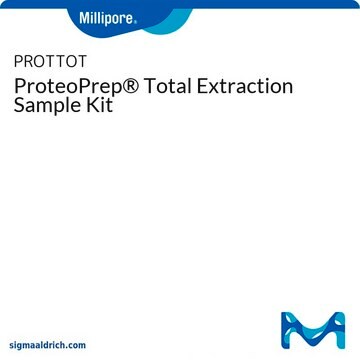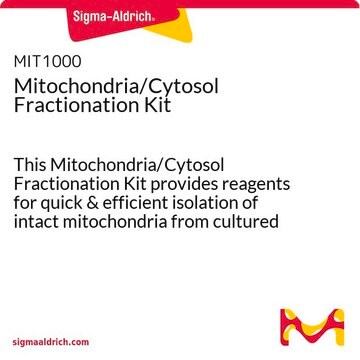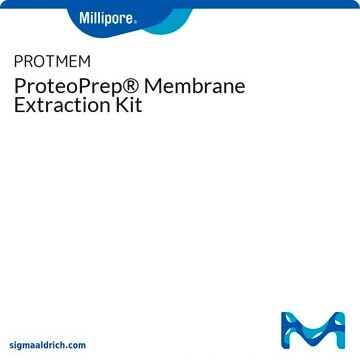NXTRACT
NuCLEAR™ Extraction Kit
For mammalian tissue or cultured cells
Synonym(s):
Nuclear Isolation Kit
About This Item
Recommended Products
Quality Level
usage
kit sufficient for 10 extractions (1 ml packed cell volume)
kit sufficient for 100 extractions (100 μl packed cell volume)
technique(s)
protein extraction: suitable
western blot: suitable
shipped in
dry ice
storage temp.
−20°C
General description
Application
Other Notes
Legal Information
Kit Components Also Available Separately
- 3× Dilution and Equilibration Buffer 90 mL
- P8340Protease Inhibitor Cocktail 1 mLSDS
Signal Word
Danger
Hazard Statements
Precautionary Statements
Hazard Classifications
Eye Dam. 1 - Met. Corr. 1 - Skin Corr. 1A
Storage Class Code
8A - Combustible corrosive hazardous materials
Flash Point(F)
188.6 °F - closed cup
Flash Point(C)
87 °C - closed cup
Certificates of Analysis (COA)
Search for Certificates of Analysis (COA) by entering the products Lot/Batch Number. Lot and Batch Numbers can be found on a product’s label following the words ‘Lot’ or ‘Batch’.
Already Own This Product?
Find documentation for the products that you have recently purchased in the Document Library.
Customers Also Viewed
Articles
Centrifugation separates organelles based on size, shape, and density, facilitating subcellular fractionation across various samples.
Centrifugation separates organelles based on size, shape, and density, facilitating subcellular fractionation across various samples.
Centrifugation separates organelles based on size, shape, and density, facilitating subcellular fractionation across various samples.
Centrifugation separates organelles based on size, shape, and density, facilitating subcellular fractionation across various samples.
Our team of scientists has experience in all areas of research including Life Science, Material Science, Chemical Synthesis, Chromatography, Analytical and many others.
Contact Technical Service














